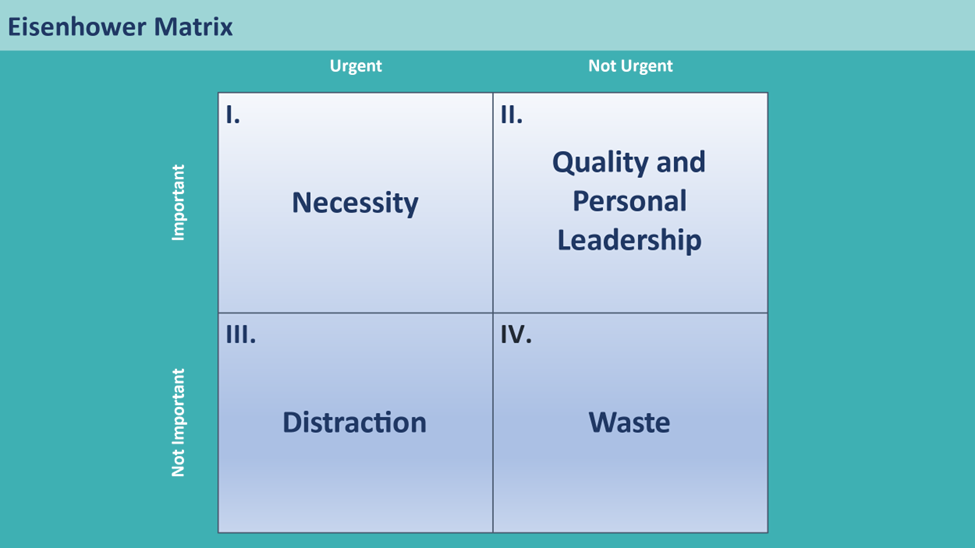INBOX ZERO, NEVER
No day is ever the same for a legal administrator. However, email is the constant that never stops pinging. “I’m a firm believer that checking emails all the time is super ineffective,” says Stern. “You’re never going to dig out of that hole; they are going to keep coming whether you check them or not.”
Instead, come into the office, knock out one project or cross one thing off your to-do list and then check your email. Scatter checks throughout the day: A morning, lunch, midafternoon and end-of-day check is still within a two-hour window where you can task-batch and respond to the most critical emails, saving others for subsequent checks throughout your day.
“If I can answer an email in one minute or less, I answer it. If it’s something that takes a little more thought process, I’ll schedule it or flag it, and if I can delegate it right then, I forward it on,” says Christy Walsh, Chief Operating Officer at Drew, Eckl & Farnham, LLP.
Communicating your preferences and work style can help you manage expectations and minimize the distractions that cause you to stop and start deep work.
Walsh says that the mental load administrators carry is huge, and her goal is to set that mental load down somewhere. “On Fridays at 4, I go through my emails and make sure that all the things that had to be taken care of are done, so I don’t go into my weekend thinking of these things. I know that everything I had has been handled.”
It’s hardly an inbox zero, and that’s OK, but it’s the same mentality. You’ve peered at every email, forwarded it, flagged it, acknowledged it or scheduled it for next week, but you’ve checked it off your mental list that day.
POST-IT NOTES AREN’T THE ANSWER
The legal administrator typically juggles multiple responsibilities, and every issue that comes up in the law firm or legal department touches them. Stern says Post-it® notes should never be your form of organization, especially since there are plenty of good tech tools. You can use a dedicated notebook, spreadsheet, or an app like Microsoft To Do, Asana, or Monday.com, which are tools that easily let you check off tasks as you complete them. “Maintaining that list is so very critical to keep you organized and make sure nothing slips through the cracks, so when the fire drill happens — and we all know it will happen — you aren’t completely thrown off for the day or the week because you’ve been on top of everything and have been maintaining that list,” says Stern.
Walsh uses the tool Microsoft Planner. “I sit down and do the strategy when I’m thinking of that project, and I do it in a burst so that even if I don’t have to do something for six months, I just go ahead and assign the tasks out and set the deadlines and I let it run itself,” she says. The tasks and notes about what you were thinking are there, so you don’t have to wonder what you were trying to accomplish. “The strategy keeps running regardless of how many fires I have going,” she adds.
This tool has allowed Walsh to effectively manage projects and keep things on track. “In terms of delegation and stress management, I don’t carry the mental load of it; I have put it in a project plan and then once a month or once a quarter, I check it and make sure people are moving it forward,” she says.
PRIORITIZE COMPETING DEADLINES AND AVOID RABBIT HOLES
There’s nothing more important than being able to pinpoint priorities. At law firms, everything is urgent and essential, and everything is a top priority. It’s particularly challenging when there are multiple stakeholders or 5 or 500 partners who are decision-makers all vying for you to tackle their priority.
The Eisenhower Matrix, also called a time management matrix, is a tool that examines the past and helps with prioritization based on two key factors: importance and urgency. We often conflate things that are urgent with things that are important, so using this matrix can help.

Quadrant 1 is for tasks that are important, necessary and time bound. These are fires that must be put out. Quadrant 2 is for client-related things that are priorities. These tasks, while not urgent, are critical to the well-being and success of the firm and should be your number two concerns.
Quadrants 3 and 4 are for strategic growth. They’re important, but because they aren’t time bound, they can be pushed off to next week, next month or next year. Some examples are strategic planning or goal setting for the firm, building out the new HR manual, and for lawyers, things like business development.
Phone calls with no purpose, doom scrolling, and things neither urgent nor essential are time wasters. Assigning tasks to a quadrant can help you categorize their significance.
PARK IT SOMEWHERE
When doubting the prioritization of an item, Stern likes the parking lot method. Put the item in the parking lot like a book, spreadsheet or on a whiteboard. Finish the whole project and then come back, and if you still think that item needs to be addressed, address it.
Once you’ve had time to think and reflect on it, if you’re still not sure, put it in a footnote. “Hey, I was thinking of this. Do you think it’s valuable?” It takes the thought off your plate, and you’ve flagged it for someone else’s review.
The legal administrator typically juggles multiple responsibilities, and every issue that comes up in the law firm or legal department touches them.
Every legal administrator would likely say they are swamped. There is so much on their plate on any given day that the better they’re able to delegate, the better they can lead and focus on the strategic aspects of their position. “The reality is that there are so many great ideas we’d all love to do, but there are budget constraints, time constraints — sometimes great ideas can be put on a wish list for next week, next month or next year,” Walsh says.






